Are you a Quiet Speculation member?
If not, now is a perfect time to join up! Our powerful tools, breaking-news analysis, and exclusive Discord channel will make sure you stay up to date and ahead of the curve.
Throne of Eldraine is officially out, and that means that data is slowly trickling in. Very slowly, to the point that I can't draw conclusions yet. It will take a few more weeks of events and brewing before things settle enough to get an accurate view of the new metagame. Now is the perfect time to try out the wilder and weirder ideas. Or just get in lots of testing with more sober ideas. I've been doing a lot of the latter, and today I'm sharing my results.
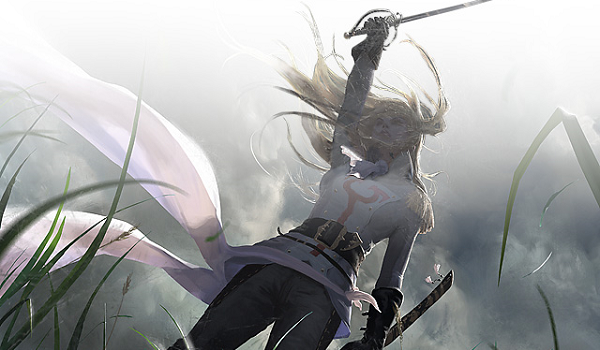
Mr. Charisma
I'll start the article where I started testing. Charming Prince stood out more than the other Eldraine spoilers. It's not the flashiest card nor the most obviously powerful, but it was the one that most looked like it needed to be worked on. There wasn't an obvious kingdom for the prince, and it wasn't clear that existing decks wanted him at all. After considerable work, I can confirm that there is, though not in a way I expected.
He Only Belongs...
I have tried Prince in a lot of Bant Ephemerate shells along with Death and Taxes, and as predicted, the 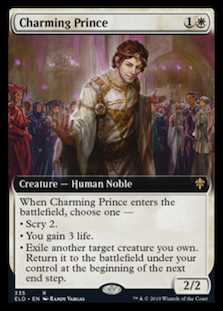 results have been resoundingly meh. Getting value from creatures is good, and getting to reuse the best abilities is great. However, Prince is fairly awkward. His own value abilities are a little marginal, which is fine because flexibility makes up for weak power (see also: Collective Brutality).
results have been resoundingly meh. Getting value from creatures is good, and getting to reuse the best abilities is great. However, Prince is fairly awkward. His own value abilities are a little marginal, which is fine because flexibility makes up for weak power (see also: Collective Brutality).
However, the fact that Prince only flickers is a problem. Flickering means returning the exiled creature at the beginning of the end step like Flickerwisp rather than an immediate return like the blink of Restoration Angel. Having to wait for value and being limited in targets meant that it didn't really fit into Bant or DnT. The former wants blink effects because it's all about chaining value continuously in a single turn, which Prince can't really contribute to. The later needs something more impressive or evasive than a 2/2. However, that doesn't mean that Prince isn't a Modern card. He just needs the right deck.
...Among His People
In my set review, I was somewhat skeptical that Prince could find a home in Humans. The deck is tightly constructed and the metagame context made me think that a flexible, but not exceptional, card like Prince couldn't make the cut. It turned out that I was thinking too linearly.
While I've always appreciated its utility, I've never actually liked Phantasmal Image, in Humans or otherwise. The card does nothing on its own by design; its value is dependent on how the game has played out up to the point it resolves. Thus, it tends to make good hands and situations great, and bad ones worse. Getting extra copies of Thalia's Lieutenant or Mantis Rider in a turn is the recipe for an instant kill. Alternatively, anything beats copying a tapped Noble Hierarch after everything else got removed. Prince gave me an excuse to replace the Images, and it has been working out well for me.
Untitled Deck
I swapped out the usual Waterlogged Grove for Silent Clearing, figuring that since I was playing more white cards, I would need the white mana. Periodically paying one less life for Dismember was also a consideration. I have no idea if this is a good change because it has yet to be relevant. I've never had any more or less trouble casting spells. That's the problem with testing one-ofs that aren't tutoring targets: the odds of drawing them are low enough that you're more likely to be in situations where they are average rather than good or bad, rendering them tough to evaluate.
What He Does...
The main reason I've replaced Image with Prince is that I've been playing against a lot of Jund and UWx Control, and Prince is much better against them. There's a lot of Burn too, but the impact Prince has is mainly felt Game 1 and is fairly small. Humans has a lot of sideboard options against Burn, and the matchup is already pretty good. However, in the grindy matchups, particularly with Vial in play, Prince's flickering is a house. Vialing-in Prince saves a creature from targeted removal and presents another threat, yielding a 2-for-1. Image just replaced the targeted creature; a 1-for-1. That it's a flickering effect also means that in the event of a sweeper, Prince can exchange himself with a more impactful creature like Mantis Rider. There's also the utility of netting extra enters-the-battlefield triggers.
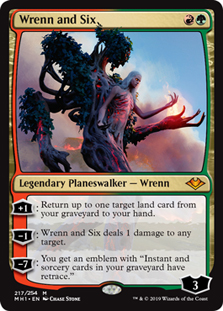 However, the biggest advantage is that Prince is never a dead card. Given the density of removal in Jund particularly, it is very possible that Image will struggle to find anything to copy, stranding it in hand. A dedicated attack on both the hand and board can easily leave Humans desperately hoping to topdeck something to copy just to be rid of the Image. Meanwhile, Prince is always 2/2, and on an empty board scrys 2 towards the next threat, which in attrition matchups is sometimes game-winning.
However, the biggest advantage is that Prince is never a dead card. Given the density of removal in Jund particularly, it is very possible that Image will struggle to find anything to copy, stranding it in hand. A dedicated attack on both the hand and board can easily leave Humans desperately hoping to topdeck something to copy just to be rid of the Image. Meanwhile, Prince is always 2/2, and on an empty board scrys 2 towards the next threat, which in attrition matchups is sometimes game-winning.
There's also the issue of Image's fragility. The card is terrible against Jund, not only because of the aforementioned risk of no targets, but because Wrenn and Six just kills it. Image already died to everything anyway, true, but Wrenn's downtick means Image is dying while the opponent gets to keep their removal spells for other creatures. That advantage snowballs in the tight Jund matchup. Also, Prince is a Human, which means he benefits from Cavern of Souls against UWx. In other words, more blanked cards for the opponent and more threats for Humans.
...And What He Doesn't
However, Prince hasn't been universally better than Image. The fact that Prince flickers rather than blinks creatures makes the ability far more defensive than Humans wants to be, and that can impact tempo-relevant matchups. I really wish he flickered opposing creatures. For example: I have a board of random dorks including Reflector Mage being walled off by a Tarmogoyf and no Aether Vial. Drawing Image means copying the Mage and clearing the road for two turns. Prince can flicker Mage, but the road won't open until Mage returns on end step, leaving just a one-turn opening. Prince has cost me games against Zoo and Affinity as a result.
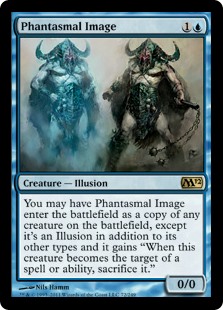 The other problem alluded to above is that Prince lengthens Humans's clock. With a Vial, Image, and Mantis Rider Humans can swing for 6+ damage (board depending) on turn three. Replace Image with Prince, and only 3 damage is locked in. Given that Humans' niche is fast, disruptive aggression from not-especially-robust creatures, that damage difference may prove fatal. I've already lost games because I couldn't quite race Valakut, but would have with Image. However, this factor has proven relevant fewer times than Image's fragility costing me games against Jund and UWx.
The other problem alluded to above is that Prince lengthens Humans's clock. With a Vial, Image, and Mantis Rider Humans can swing for 6+ damage (board depending) on turn three. Replace Image with Prince, and only 3 damage is locked in. Given that Humans' niche is fast, disruptive aggression from not-especially-robust creatures, that damage difference may prove fatal. I've already lost games because I couldn't quite race Valakut, but would have with Image. However, this factor has proven relevant fewer times than Image's fragility costing me games against Jund and UWx.
Overall, whether Humans should adopt Prince over Image comes down to how the metagame develops. In a non-interactive field of Tron, combo decks, and other creature decks, Image is the pick, since tempo is more important than value. If the meta shapes up as my experience indicates with Burn, UWx, and Jund dominating, then Prince is the pick, because life and grinding value matter more than tempo. I will be sticking with Prince due to my metagame, but with the overall meta still fluctuating, this may not last.
Wild Tonal Swings
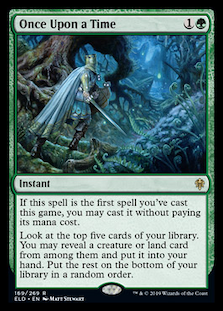 The other topic is fan-favorite Once Upon a Time. When the card was first spoiled, the hype machine ran wild, and everyone assumed that it would be everywhere, ushering in a new faster era of creature combo. Once the card had been more thoroughly examined, the hype started to die down. That a swingy cantrip isn't appropriate in every deck is a lesson that needs to be relearned periodically. However, the potential is enough that Once can't be written off, and testing has shown that it can work in Modern, within reason.
The other topic is fan-favorite Once Upon a Time. When the card was first spoiled, the hype machine ran wild, and everyone assumed that it would be everywhere, ushering in a new faster era of creature combo. Once the card had been more thoroughly examined, the hype started to die down. That a swingy cantrip isn't appropriate in every deck is a lesson that needs to be relearned periodically. However, the potential is enough that Once can't be written off, and testing has shown that it can work in Modern, within reason.
Flat Note
First of all, I haven't seen anything to suggest that Neobrand is anymore of a deck now than before. When I first experimented with Neoform I found the deck to be swingy, explosive, and bad. With Once in the picture, Neobrand was still swingy, explosive, and bad. I just felt compelled to keep more speculative hands because I had Once to try and fix things. The deck's fundamental problem is its fragility since it is a multipart combo with very specialized pieces. Once helped a bit with finding Allosaurus Rider or a missing land, but those weren't really the problem anyway. The real struggle was finding and resolving a tutor, which Once can't help.
Wild Note
However, playing Once in more robust decks felt pretty good. Specifically, I tested RG Valakut and Amulet Titan, and Once was a reasonable card in both. I tried a lot of decks out, but only Valakut and Amulet actually made Once feel good. The main advantage those two deck have 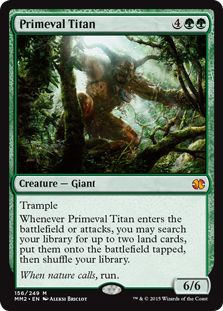 is that the lands are all they really need. Hitting Valakut, the Molten Pinnacle or Tolaria West isn't as obviously good as hitting Primeval Titan, but they can still outright win the game on their own (technically).
is that the lands are all they really need. Hitting Valakut, the Molten Pinnacle or Tolaria West isn't as obviously good as hitting Primeval Titan, but they can still outright win the game on their own (technically).
It was also far more reasonable to play Once either as the first spell or at any other time for these two decks. I keep hammering this point, but the main appeal of Once is getting played for free. Nobody would run the effect otherwise. Both Valakut and Amulet do run similar effects already, and as big mana decks, Once's cost isn't a problem. It actually felt just as good to pay full price as it did to cast Once for free. Free copies are generally speculative, finding what I think I need, where paid-for Once finds what I actually need. As a result, I was very satisfied with Once. Then I checked over my notes and realized something wasn't right.
Deceptive Noise?
Despite the positive effects I was noticing in-game, when I looked at my win-rate data, there was no noticeable improvement. In any matchup, for either deck. While I can't definitively explain this effect, my working theory is that the trade-offs made to run Once are steeper than expected. In Amulet, I had to cut on utility cards, particularly Engineered Explosives, while Valakut trimmed ramp spells. This meant that while my early game felt better, the mid-game was slightly worse. In Amulet, the lessened interaction meant that any hiccup in the gameplan was magnified. In Valakut, it became slightly harder to hit the last few land drops. These effects are certainly marginal, but so are the odds of casting Once for free.
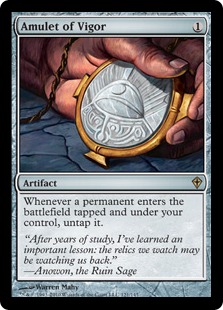
There's also the issue of mulligan ambiguity. Do you keep an otherwise unkeepable hand on the promise that Once fixes everything? Once isn't Land Grant, and keeping hoping to find that critical missing piece is a dice-roll. There were instances in testing where I kept, hoping to hit a land, and saw only creatures. Or I needed a specific land (a non-karoo in Amulet; a green source in Valakut) to turn a garbage hand into a phenomenal one, then whiffed on Once and lost. I kept track of this data, and it worked out 13 times to 24 disasters. I'm therefore inclined to think that Once is a trap. Solidly playable, but an opening-hand trap. I need to further explore this disconnect between the quantitative and qualitative data.
First Draft
These are just the early results, and metagame swings and adjustments may change my evaluations. Also, I have a lot of work to go on a lot of other cards. How's your testing going? Let me know in the comments.




